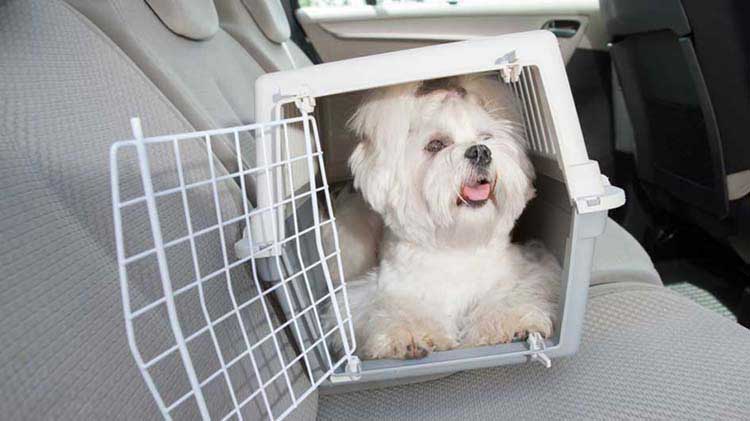Driving to Mexico
If you dream about being able to one day jump in the car and head southbound until you cross the Mexican border, there are certain arrangements and documents that are required. Here is some information to keep in mind if you decide to travel.
The land border between the U.S. and Mexico is the international crossing most transited by people and vehicles in the Western Hemisphere. Hundreds of thousands of people and entire families cross from one side to the other every day to go to work, visit family, and even go shopping, sightseeing or on vacation.
If you're thinking about driving south across the Mexican border, we've provided answers here to some of the most commonly asked questions — questions that you're probably asking yourself. Let's go!
First of all, does my U.S. driver's license work in Mexico?
Yes. You can use your U.S. driver's license to drive in Mexico. Have it with you at all times, in case you get stopped while driving and authorities request it.
Does that mean that I can use my U.S. driver's license anywhere in the world?
No. In some countries, U.S. citizens are only allowed to drive with an International Driving Permit (IDP). Although an IDP is not considered a license, it certifies that you have a valid driver's license in your country of origin, for which reason it's recommended that you carry one together with your U.S. driver's license. An IDP can also be used as a valid form of identification, since it has your information translated into different languages and could even facilitate renting a car in other countries.
Getting an IDP is not difficult, and you can even get one the same day by visiting an American Automobile Association (AAA) office. However, if you're thinking about requesting one for a future trip, keep in mind that they are only good for a year. In addition, look into whether they are valid in the place you want to travel to; there are some countries, like China, where neither an IDP nor an original driver's license from your home country allow you to drive legally.
Can I drive my car to Mexico?
Yes. However, if you are thinking about traveling in further than the border cities, you'll need to complete some extra paperwork that we cover below before you travel. Furthermore, you'll have to pay some fees and carry documentation with you.
What do I need to travel to Mexico by car?
U.S. citizens need the following:
- U.S. passport or passport card. If you don't have a passport, remember that it can take up to 10 weeks for your passport to process and ship once you've applied in person or by mail.
- Your driver's license. It should be valid during the time of your stay in Mexico.
- Title or registration of your vehicle. A current document will allow you to request a permit for taking your vehicle into Mexico. If you have a lease agreement, you'll need a letter from the company that granted the lease authorizing the temporary importation of the vehicle to Mexico.
- Credit agreement. If you're financing your vehicle, you might need the finance agreement, or a letter from the financial entity granting you authorization to drive the vehicle in Mexico.
What paperwork does Mexico require from U.S. visitors who cross the border in a vehicle?
Aside from getting a Temporary Vehicle Import Permit as we explain below, you'll also need the following:
- An insurance policy from a Mexican company. Unless you stay in the border area the entire time that you are in Mexico, you'll need, at minimum, auto insurance from a Mexican company that includes liability coverage (also called "liability for damages to third parties"). If you don't purchase insurance online before entering Mexico, there are insurance companies and retail insurance agent offices on the other side of a border crossing where you can purchase insurance. If you have any questions regarding auto coverage when you are close to the border, please contact a State Farm® agent.
- A DNR for foreign visitors. If you're thinking of staying in Mexico for longer than seven days, you'll need to purchase a DNR, which is a "visitor's visa without permission to perform remunerated activities" (see below). You can purchase it upon entering Mexico, at any time during your stay or when you return to the U.S.
- Forma Migratoria Múltiple (Multiple Immigration Form). Once you've gone through Mexican customs, you can get the required entry permit that is issued by the Instituto Nacional de Migración (INM). This permit is called Forma Migratoria Múltiple (FMM) in Spanish (Multiple Immigration Form in English), and you can also complete the form and make payment electronically ahead of time. If you do it online, don't forget to print the document together with your payment receipt so that you can get the stamps demonstrating its validity at the INM kiosks in Mexico.
What is a Temporary Vehicle Import Permit and how do I get one?
You can request a Temporary Vehicle Import Permit (ITV) online through Banjercito (Website is available in Spanish only), an entity of the Mexican government. It allows you to enter and exit Mexico multiple times in a six-month period, and it’s exclusively for foreigners (tourists) and Mexican residents in the U.S. that want to enter Mexico with a U.S.-based vehicle.
Mexicans who are permanent residents of the U.S. must show their Green Card, U.S. passport or passport card. Once you have an ITV permit, you’ll get a sticker that must be affixed to the windshield.
Is a Temporary Vehicle Import Permit expensive?
The permit itself might not be considered expensive. You pay for it in dollars (or the equivalent in Mexican pesos); online it can cost about $45 through Banjercito. You can also purchase one at customs when entering Mexico, or at a Mexican consulate in the U.S. (where they cost around $51).
However, besides paying for the permit itself, you have to leave a deposit to ensure that you will return with the vehicle within the time authorized. The total deposit (in dollars) depends on the year of the vehicle:
- 2007 and newer: $400
- 2001–2006: $300
- 2000 and prior: $200
As long as the permit is still valid, you can get your deposit back at one of the Mexican entity Banjercito's border kiosks upon returning to the U.S.
How much does the DNR or visitor's visa cost for U.S. and Mexican citizens?
Mexican citizens don't have to make a payment, but must show documentation from Mexico, such as a passport, ID card, certified birth or naturalization certificate, matrícula consular card, etc.
U.S. citizens and citizens of other countries staying in Mexico longer than seven days must individually pay for a DNR, which is a type of visa called Derecho de Visitante Sin Permiso para Realizar Actividades Remuneradas in Spanish (visitor's visa without permission to perform remunerated activities). For 2024, the established fee was $53. It could be said that, in a way, paying the fee is the same as paying for a tourist visa. If you don't pay upon entering Mexico and decide to stay longer than seven days, you will be charged when you return to the U.S.
For more information about these and other requirements, check out the guide Héroes Paisanos published by the Mexican government (only available in Spanish).
Are the areas around the Mexican border safe?
The U.S.-Mexico border is almost two thousand miles long, and the movement of people and merchandise across it happens on a massive scale. With so many connecting highways, international bridges, border crossings and ports of entry, some crossings may be more dangerous than others.
There's no doubt that Mexico is a beautiful and vibrant country, and because of this very reason it's easy to forget that it's important for you and your family to stay aware of your surroundings throughout your travels. For your safety, prior to your trip, it's recommended that you look into the possible issues you might come across — not just at the points along the border where you are thinking of crossing, but also at the specific destinations you have in mind.
Now that you have information to help you prepare for your trip to Mexico, learn about other travel safety tips like how to be alert when using rest areas, how to drive in heavy traffic, how to stay safe during a hotel stay, or what to do when encountering bad weather on the highway.




